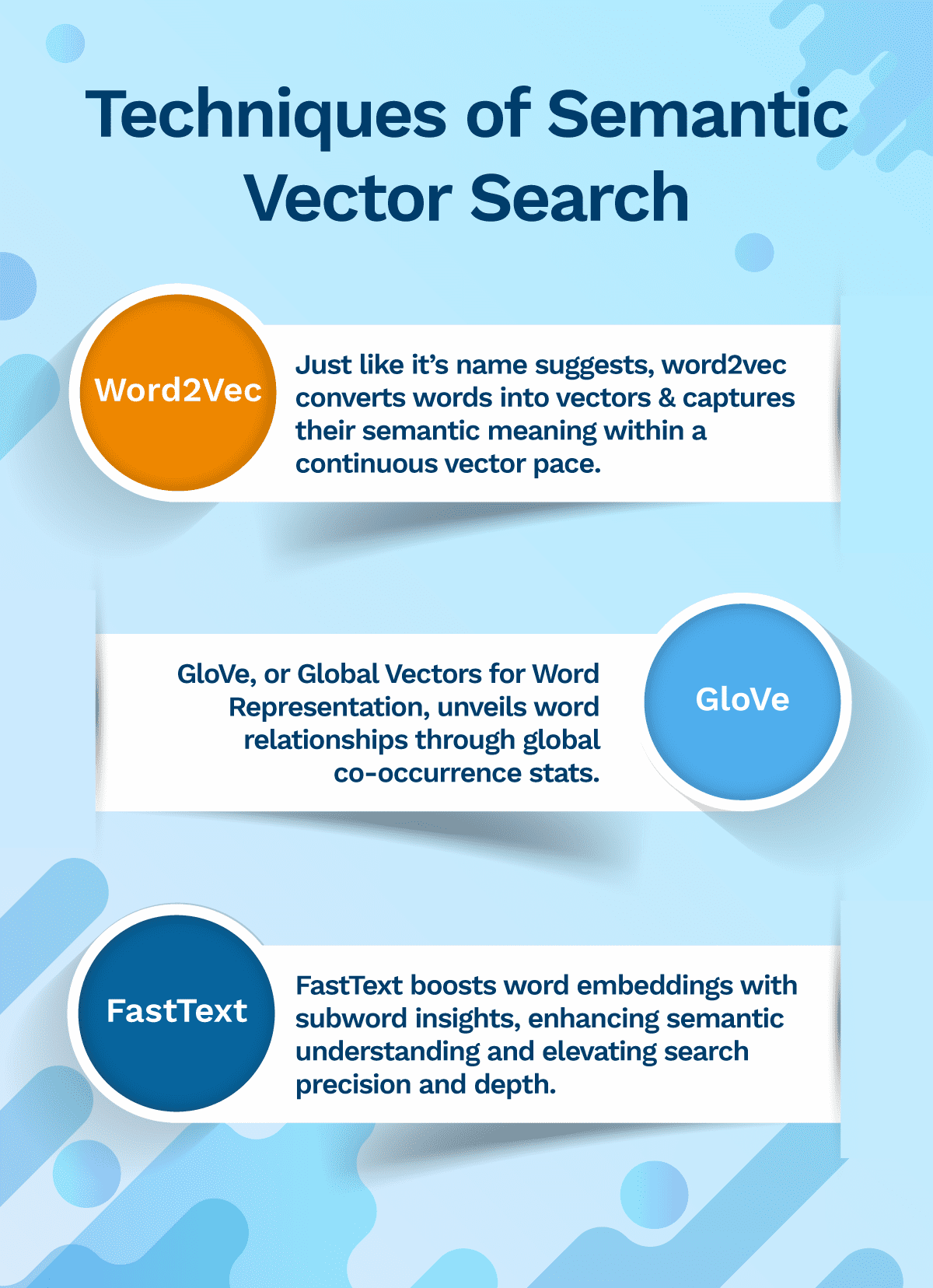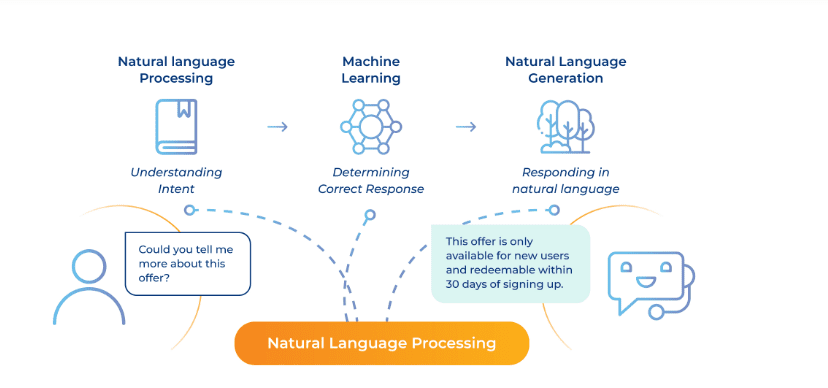
Image by rawpixel.com on Freepik
Did you know that around 99.5% of data collected by enterprises goes untouched? In fact, it never even gets used or analyzed. This shows a huge gap that can only be bridged by an advanced enterprise search platform.
Over the past few years, the search tapestry has changed drastically. It has gone from using full-text and keyword-matching mechanisms to more sophisticated techniques like semantic (understanding the meaning behind words) and visual (searching using pictures) platforms that define today’s digital landscape.
This is in response to the ever-growing customer expectations—individuals today don’t just want generalized search results, they want them to be personalized and relevant to a T. This is where Semantic Vector Search comes in.
It seamlessly uses deep metric learning to train a semantic model that helps in organizing queries in a vector space so that similar things are combined and dissimilar things are separated
Explore this blog post to learn about the fundamentals of semantic vector search and much more.
First Things First—What is Semantic Vector Search
Traditional search engines only focus on exact keywords and return results centered around them. On the contrary, an advanced AI system goes above and beyond keyword mapping to comprehend the context and the intent behind the query.
For instance, an agitated customer contacted customer support and complained, “Wow, thank you for sending my luggage to Washington and flying me to Los Angeles at the same time. Brilliant service!” In this scenario, a traditional search engine would fixate on words like ‘Wow’, and ‘Brilliant Service.’ However, a semantic vector search engine delves deeper into the issue—where it understands the underlying sarcasm and customer frustration. It’s like having a support agent who not only hears keywords but grasps their meaning and context, offering more effective assistance.
McKinsey research found that companies that excel at personalization generate 40% more revenue from those activities than average players. Across US industries, shifting to top-quartile performance in personalization would generate over $1 trillion in value.
But, How Does it Work?

Let’s imagine each word as a resident in a sky-rise building. Residents with addresses like 45, 46, and 47 reside in the same block whereas residents of 55, 56, and 57 reside in the next block. The distance and direction between these residents represent the relationships between words where words with similar meanings end up closer to each other.
Now, that you know the basic meaning, let’s get to the brass tacks.
When a user inputs a query, the system translates it into a vector. Thereafter, it scouts for other vectors that are close in meaning. This ensures the system retrieves not only exact matches but also semantically related information.
But What Role Do Semantics Play in Vector Search?
The significance of the semantics lies in the AI system’s ability to understand and grasp the exact meaning behind words by considering synonyms and context among other things.
The result? Accurate, relevant, personalized responses that jumpstart issue resolution and leave customers delighted.
But, to ensure everything flows smoothly, there is a complex mechanism, also a subset of artificial intelligence, that is working under the hood known as—machine learning.
The ML algorithms deeply comprehend the subtle similarities and differences between words. To do so, they view them as pieces of a large puzzle rather than understanding the meaning of a single word.
Artificial Intelligence (AI) algorithms break down the complexities of language. It analyses the context, patterns, and correlation within the data. They demystify the meaning of words by going beyond the superficial interpretation.
For instance, a customer approaches your company with a concern. They want to decorate their kitchen with the vibrant hues of cherry and plum. However, your virtual assistant mistook the reference as a fruit. This dual usage highlights how the same term can have different meanings and contexts.
This is where an advanced AI system can interpret the inherent meaning of terms and their correlation with each other.
The Types of Semantic Vector Search Techniques
This search applies powerful word embedding techniques to understand the nuances of language:

How Does Vector Search Transform Customer Support Interactions?
Two domains where semantic vector search turbocharges customer support to enhance the experience are:
1. Understanding the Natural Language
Natural language is ambiguous. It becomes an uphill battle for machines to comprehend the way humans communicate. This is where natural language processing (NLP) can help. It is a multidisciplinary process that combines machine learning and natural language generation to make human and machine interactions possible. Semantic vector search applies NLP to catalyze sentiment analysis.

Sentiment Analysis categorizes data as positive, negative, or neutral. By incorporating sentiment analysis in their existing systems, organizations can glean valuable insights about the needs and problems of their customers. Doing so enables organizations to render proactive and personalized experiences.
2. Facilitating Information Retrieval
Since semantic vector search can grasp the underlying meaning, intent, and context of the query, it ensures the right help articles reach the right audience at the right time. It leverages AI to gain a 360-degree view of your user’s journey, This way, organizations can provide support at full throttle by hyper-personalizing it according to the user’s browsing history, customer sentiments, etc. As an added advantage, the CSAT score also shoots up. Win-win, right?
But, hold on! Where there’s brilliance, there are challenges.
Challenges in the Path to Effective Vector Search
Although the future of Semantic Vector Search promises profound benefits, there are hurdles in the path to achieving them. They are:
1. Handling Ambiguity in Semantics
Since natural or human language is ambiguous, words and sentences can have different interpretations for different individuals. For this reason, it becomes incredibly difficult to correctly decipher the context and intent of user queries. Deploying advanced machine learning algorithms can help. They learn from user interactions to improve their accuracy over time.
2. Ethical Considerations
As Semantic Vector Search systems are trained on a massive data set, it’s inevitable for a few ethical considerations concerning privacy, bias, and transparency to sprout. Let’s treat these privacy concerns as stepping stones rather than viewing them as roadblocks. To prevent discriminatory outcomes, it’s imperative to take measures for bias mitigation by regularly auditing and updating the data.
Looking for a Force Multiplier For Turbocharge Your Enterprise Search Engine?
There are a multitude of techniques like neural, vector, and semantic search making rounds in the market. Here neural networks contribute depth, vector search enhances precision, and semantic understanding unveils nuanced layers of meaning.
Using them in isolation would leave their capabilities underutilized. This is where a unified cognitive platform can appear as the silver lining. It seamlessly integrates different search techniques to ensure users can enjoy a personalized, contextual, and prompt search experience.
Taranjeet is a Data Scientist with a keen interest in Behavioral Science, who gradually moved focus into Relevance. Delivered production-ready solutions in problems like LLMs, escalation prediction, Intent detection, Semantic search, and Recommendation systems while leveraging state of art edge-AI and NLP technologies.



